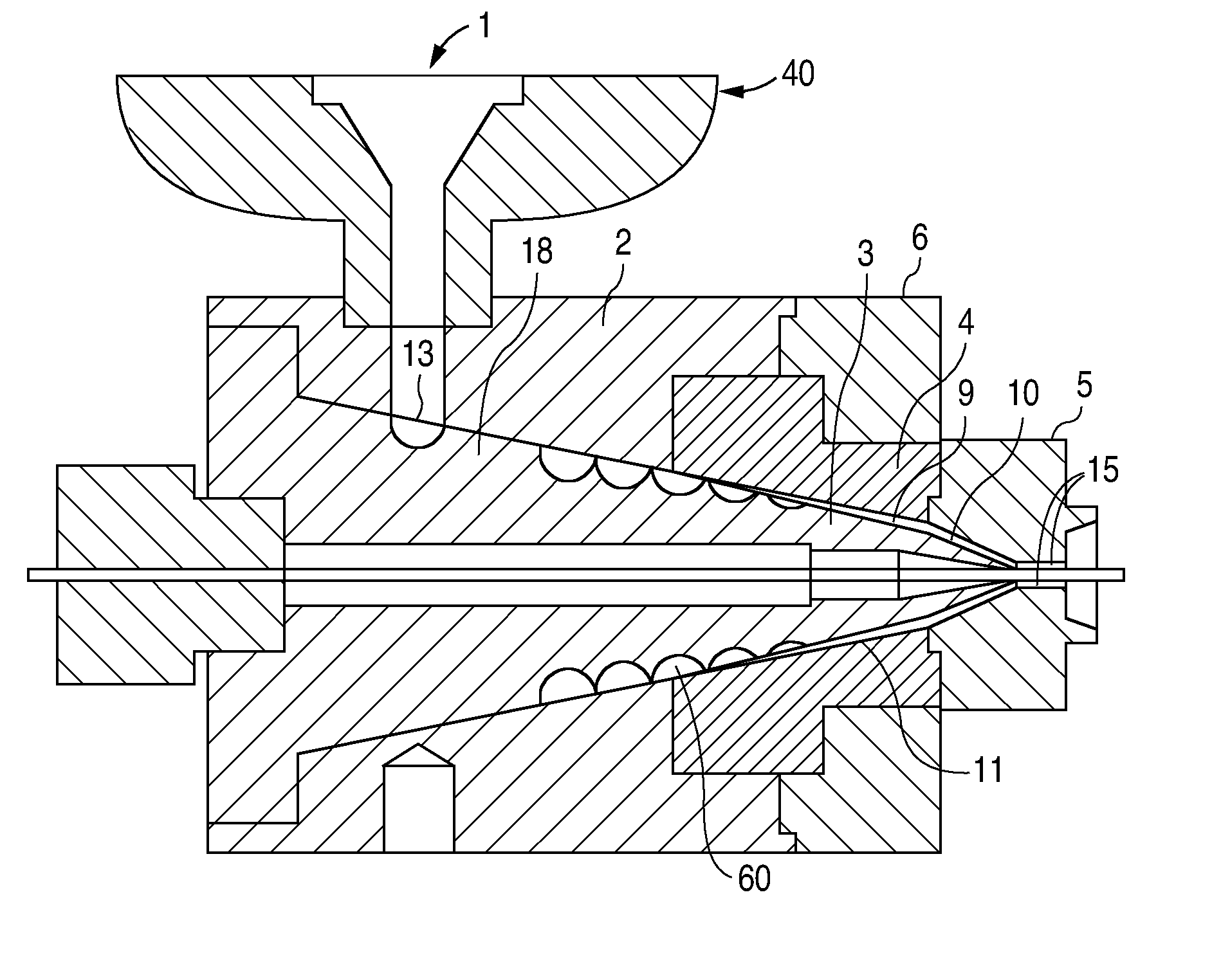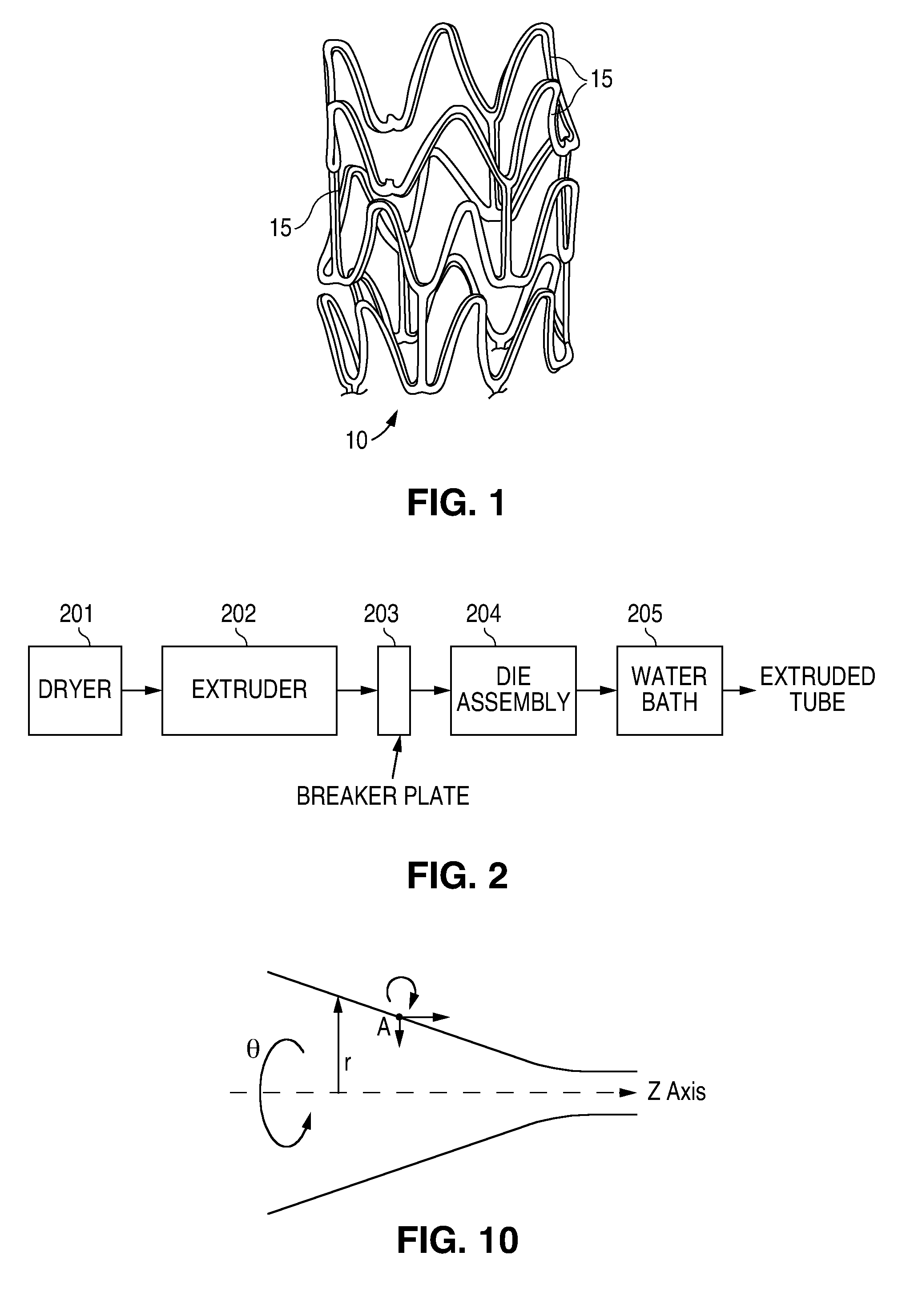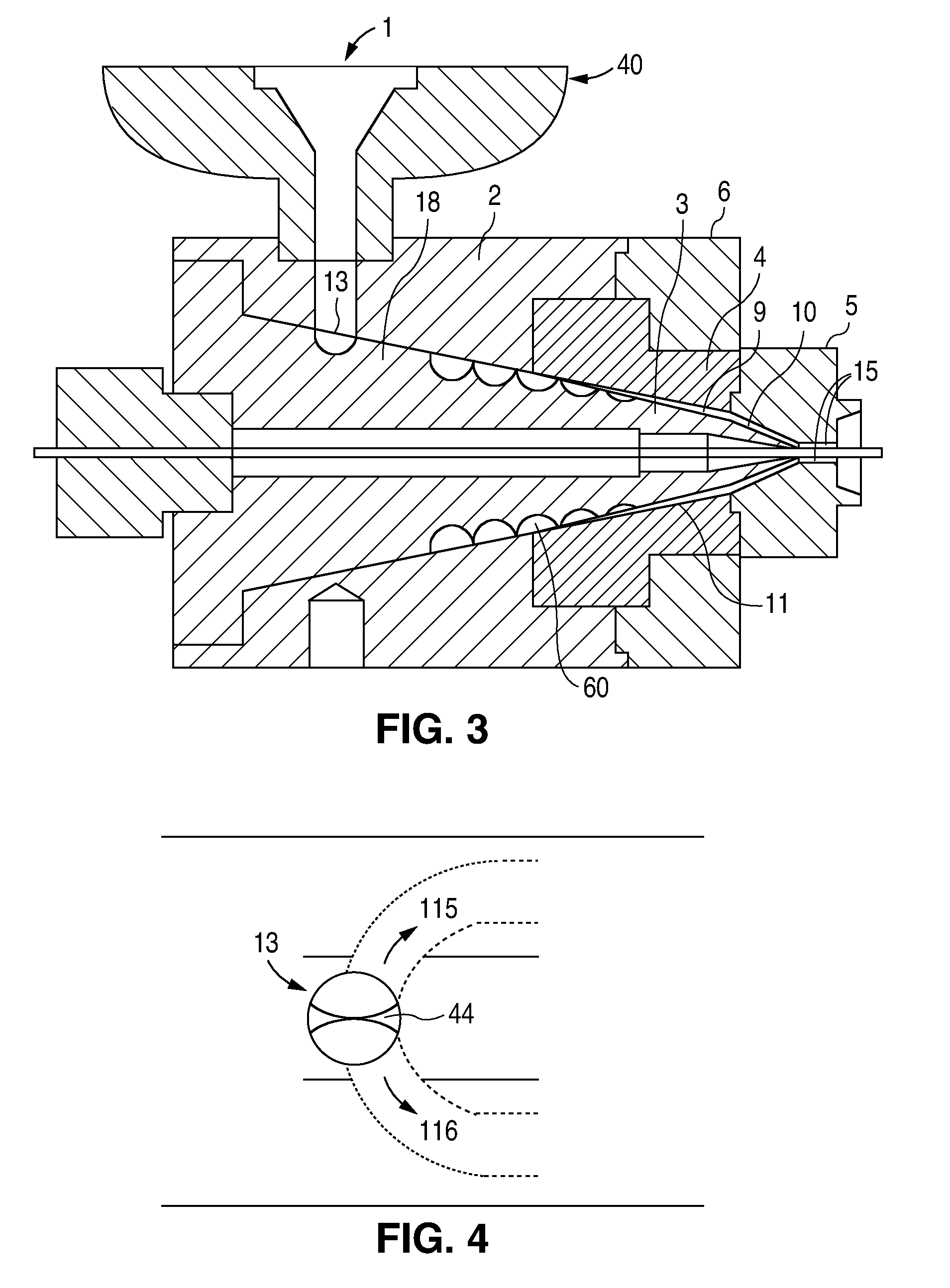Method Of Fabricating A Low Crystallinity Poly(L-Lactide) Tube
- Summary
- Abstract
- Description
- Claims
- Application Information
AI Technical Summary
Benefits of technology
Problems solved by technology
Method used
Image
Examples
example 1
A number of extrusion trials were run with poly(L-lactide) to produce extruded polymer tubes. Poly(L-lactide) (PLLA), RESOMER® L 210 S, supplied by Boehringer Ingelheim, was used. The PLLA had a weight average molecular weight in the range of about 590,000 to about 650,000, a number average molecular weight in the range of about 320,000 to about 380,000, a crystallinity of about 60%, an inherent viscosity of 3.3-4.3 dL / g as determined in chloroform at 25° C. and a 0.1% (mass / volume) concentration, and a water content of less than or equal to 0.5%. The PLLA resin was dried in an on-line hopper using air at 60° C. and about 0% humidity resulting in a residual moisture content of less than 200 ppm. After being dried in the hopper, the PLLA was gravity fed to the extruder. The PLLA was extruded in a 1″ inch Killion single screw extruder with a length to diameter ratio of 24 using a compression ratio of 3.27:1, and a speed (extruder screw) ranging from 5 to 15 RPM. The three zones of the...
example 2
The following prophetic example illustrates the extrusion of a polymer tube on slightly different equipment. Extrusion of PLLA as described in Example 1 is performed. The polymer resin is dried using a hopper / dryer as described in Example 1. The extruder used is a ¾″ American Khune Extruder with a barrier screw, three feed flights, and a length to diameter ratio of 24:1. The extrusion is carried out at a compression ratio of 3:1 and a speed in the range of 5 to 30 RPM. The temperature in the extruder is about the same as or slightly lower than the temperatures used in Example 1.
At the end of the extruder, the polymer melt is forced through a breaker plate and into the spiral cross-head die assembly. The spiral cross-head is manufactured by Guill Tool and Engineering company and is a Model 712 Assembly which was selected for use with poly(L-lactide). The Model 712 Assembly primarily differs from that of example 1 in that the tip (analogous to reference numeral 3 in FIG. 3) is slightl...
PUM
| Property | Measurement | Unit |
|---|---|---|
| Temperature | aaaaa | aaaaa |
| Temperature | aaaaa | aaaaa |
| Temperature | aaaaa | aaaaa |
Abstract
Description
Claims
Application Information
 Login to View More
Login to View More - R&D
- Intellectual Property
- Life Sciences
- Materials
- Tech Scout
- Unparalleled Data Quality
- Higher Quality Content
- 60% Fewer Hallucinations
Browse by: Latest US Patents, China's latest patents, Technical Efficacy Thesaurus, Application Domain, Technology Topic, Popular Technical Reports.
© 2025 PatSnap. All rights reserved.Legal|Privacy policy|Modern Slavery Act Transparency Statement|Sitemap|About US| Contact US: help@patsnap.com



